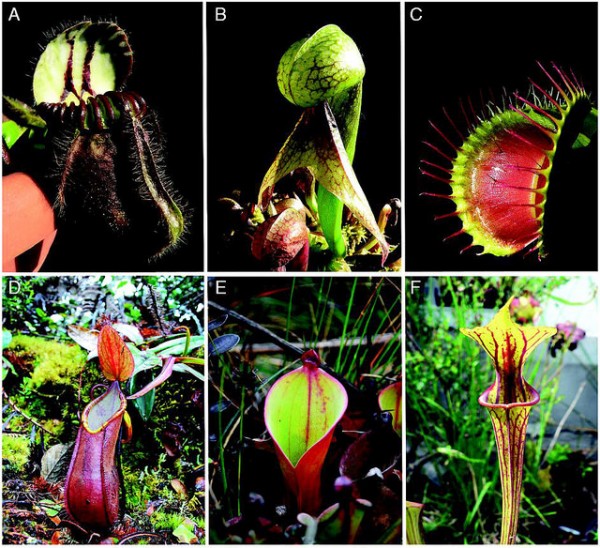By Ana Verayo, | February 09, 2017

Cephalotus follicularis, the Australian pitcher plant. (microbiologybytes/CC BY-SA 2.0)
A new study has revealed that carnivorous plants developed their unique killer instinct during their evolution in different habitats. This study involved analyzing the genetic makeup of different pitcher plants found in America, Asia, and Australia.
Three species of carnivorous plants thrive in different habitats around the world, and they all possess the exact biological process for devouring and digesting prey of insects. According to the co-author of the study, Victor Albert of Buffalo University, despite possessing a killer instinct, these plants were not exposed to evolutionary pathways that could have helped them to develop this carnivorous trait.
Like Us on Facebook
Since these unique yet deadly plants grow in habitats that lack carbon dioxide for photosynthesis, these habitats cannot provide nitrogen and phosphorous that are crucial for the plant's nutrition. So how does the carnivorous pitcher plants work?
These plants capture insects using its trap, which is a leaf shaped like a long tube lined with a waxy and slippery interior. Its bottom is closed where this tube leaf is filled with a "soup" of digestive fluids that can break down flesh and exoskeletons of prey.
During this study, the team examined and analyzed three flesh-eating plants. First, they mapped the genome of the Australian Cephalotus follicularis, which is also related to the star fruit. Albert said that this plant possessed two kinds of leaves, flat ones, and pitchers. Researchers were able to identify several genes which are linked to digestive enzymes that are expressed in pitcher plant traps.
The team then sequenced two other carnivorous plant species; the Asian pitcher plant Nepenthes alatar related to buckwheat, and the American pitcher plant Sarracenia purpurea that is closely related to the kiwi fruit. Researchers were also able to sequence their digestive enzymes and fluid proteins.
The new findings showed that these plant proteins were originally used to fight stress and prevent disease. Now, these digestive enzymes have transformed into a toxic fluid that can break down insect carcasses.
Albert explained that these plants evolved independently within different lineages of flowering plants. However, the researchers did not realize that the protein families that these flesh eating plants use for digestion also evolved independently as well. Simply put, these critical enzymes evolved separately in different habitats and lineages are a fine example of "nested convergence" or convergent evolution in several levels of hierarchy.
This new study was published in the journal, Nature Ecology and Evolution.
-
Use of Coronavirus Pandemic Drones Raises Privacy Concerns: Drones Spread Fear, Local Officials Say

-
Coronavirus Hampers The Delivery Of Lockheed Martin F-35 Stealth Fighters For 2020

-
Instagram Speeds Up Plans to Add Account Memorialization Feature Due to COVID-19 Deaths

-
NASA: Perseverance Plans to Bring 'Mars Rock' to Earth in 2031

-
600 Dead And 3,000 In The Hospital as Iranians Believed Drinking High-Concentrations of Alcohol Can Cure The Coronavirus

-
600 Dead And 3,000 In The Hospital as Iranians Believed Drinking High-Concentrations of Alcohol Can Cure The Coronavirus

-
COVID-19: Doctors, Nurses Use Virtual Reality to Learn New Skills in Treating Coronavirus Patients








